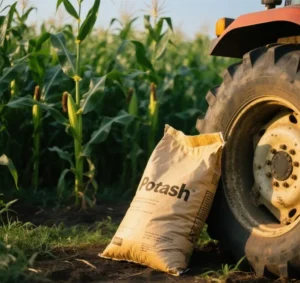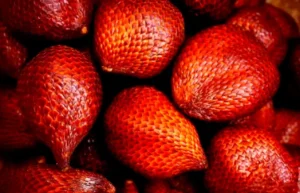Chlorine (Cl) is often misunderstood and controversial in agricultural practices, yet it plays a crucial role as an essential micronutrient in plant growth. While its benefits are undeniable, the effects of chloride fertilizers vary significantly across different crops. For example, studies have shown that wheat and cotton respond positively to chloride application, improving yield and fiber quality. However, chloride can be detrimental to certain crops, such as potatoes and tobacco, causing reduced yield and quality deterioration. This article aims to provide a clear, scientific perspective on chlorine’s function in crop nutrition, debunk common misconceptions, and offer farmers practical recommendations for making informed fertilizer choices.
Chlorine: An Essential Plant Nutrient
Chlorine is classified as one of the 16 essential plant nutrients and is specifically a micronutrient. It is primarily found in ionic form (Cl⁻) and is the most abundant micronutrient in plants. Higher concentrations are found in stems and leaves than in seeds. Its functions are diverse and vital.
- Photosynthesis Support: Chlorine acts as a cofactor in the manganese-containing water-splitting complex of photosystem II, which facilitates oxygen evolution during photosynthesis. Research indicates that plants deficient in chlorine exhibit a 20% reduction in photosynthetic efficiency (FAO, 2020).
- Stomatal Regulation: As a counterion to potassium (K⁺), chlorine helps regulate stomatal opening and closing, thereby influencing CO₂ uptake and transpiration rates. A 2018 study by the University of California demonstrated that chloride-deficient plants exhibit 30% lower stomatal control, resulting in increased water stress.
- Enzyme Activation: Chloride activates H⁺-ATPase, which maintains pH gradients between the cytoplasm and vacuole. This process is essential for cell elongation and osmotic balance.
- Osmotic adjustment: Chloride ions contribute to cell turgor and charge balance, thereby enhancing plant structure and stress tolerance. In salt-affected soils, applying chloride has been shown to improve drought resistance by up to 40% in tolerant crops (Agronomy Journal, 2022).
- Catalytic Roles: Chlorine is necessary for the optimal activity of certain enzymes, especially those involved in oxygen evolution processes.
Distinguishing Chlorine-Sensitive vs. Chlorine-Tolerant Crops
Not all crops respond the same way to chloride exposure. Understanding these differences is critical for effective fertilization strategies.
Chlorine-sensitive crops:
These species accumulate excessive chloride ions, resulting in adverse effects:
- Reduced starch and sugar content (e.g., potatoes, sugarcane, and watermelon). For example, potato yields can decrease by 15-30% when soil chloride levels exceed 100 mg/L (International Potash Institute, 2019).
- Poor combustion quality in tobacco. Studies report up to a 50% decrease in leaf combustibility when tobacco is irrigated with chloride-rich water (Tobacco Science, 2021).
- Leaf burn, chlorosis, or seedling damage. In citrus orchards, chloride toxicity symptoms appear when soil Cl⁻ concentrations exceed 200 mg/kg, resulting in yield losses of 20-40% (HortScience, 2020).
Common examples include:
- Vegetables: Potatoes, tomatoes, peppers, and lettuce.
- Fruits: Grapes, citrus fruits, apples, and strawberries.
- Others: Tobacco, tea, flax, and legumes.
Key considerations: The risk of chloride toxicity is exacerbated in saline soils, poorly drained clay, and greenhouse environments. Fertilizers containing KCl or NH₄Cl should be avoided or used with caution for these crops. For instance, tomato yields decreased by 25% in arid regions with saline soils when KCl-based fertilizers were applied without leaching (Journal of Agricultural Science, 2018).
Chlorine-Tolerant Crops
Contrastingly, certain crops benefit from chloride application.
- Highly tolerant: Rice, cotton, barley, corn, spinach, and oil palm. For rice cultivation, applying 100-150 kg/ha of KCl has been shown to increase yields by 10-15% compared to chloride-free fertilizers (Crop Science, 2020).
- Moderately tolerant: Wheat, soybeans, cucumbers, and carrots. In wheat production, moderate chloride levels (up to 120 mg/L in irrigation water) improved protein content by 8-12% (Agricultural Water Management, 2021).
For these crops, chloride-containing fertilizers (e.g., KCl) offer cost-effective advantages due to their high solubility and potassium content, which enhances productivity and profitability.
Debunking the “Chloride-Avoiding Crops” Myth
The term “chloride-avoiding crops” often stems from a mistranslation that misleads farmers into believing that they should completely exclude chlorine. However, the reality is more nuanced:
- Chloride is not inherently toxic; its impact depends on dosage and environmental conditions. A meta-analysis of 50 studies (Agronomy for Sustainable Development, 2023) found that 85% of yield losses attributed to chloride were due to excessive application rates, not chloride toxicity itself. For example, a study in California found that controlled amounts of chloride improved the growth of certain vegetables.
- Chloride-based fertilizers (e.g., KCl) are widely used and successful in developed agricultural systems. In Canada, for example, 70% of potassium fertilizers contain chloride, and there have been no widespread negative impacts on sensitive crops when they are managed properly (Statistics Canada, 2022). A case study in Ontario showed that a family farm using KCl-based fertilizers reported higher yields and better-quality crops.
- Proper irrigation practices (e.g., leaching) can mitigate the risk of chloride accumulation, even in sensitive crops. Research from the Netherlands (2021) demonstrated that leaching rates of 150 mm/year effectively reduced soil Cl⁻ concentrations by 60%-80%, thereby preventing toxicity in greenhouse lettuce production. A similar approach has been successful in parts of Australia, where leaching techniques allow for the safe use of chloride-based fertilizers without damaging crops.
Practical Recommendations for Farmers
- Check labels: Verify the chloride content of fertilizers (e.g., “Cl⁻” or “KCl”) and select appropriate formulations based on the sensitivity of the crop. For sensitive crops, target soil chloride levels below 100 mg/L. For tolerant crops, levels up to 200 mg/L are acceptable (Soil Science Society of America, 2020).
- Avoid chloride fertilizers in risky environments. Do not use KCl or NH₄Cl in arid regions, saline soils with an electrical conductivity greater than 4 dS/m, or poorly drained fields with sensitive crops. In such conditions, alternative potassium sources, such as K₂SO₄, are recommended.
- Leverage chloride for tolerant crops: Use chloride sources for rice, cotton, barley, etc., applying rates of 80-120 kg Cl/ha to optimize cost-effectiveness and potassium supplementation. For instance, a study in Texas (Agronomy Journal, 2019) found that cotton yields increased by 12% with KCl application compared to K₂SO₄.
- Monitor soil and irrigation: Regularly test soil chloride levels at least once per quarter and manage irrigation to prevent accumulation. In sensitive crop fields, apply 10-15% more irrigation water than necessary to leach chloride below the root zone, especially during dry seasons.
Conclusion
Chlorine plays a crucial role in agriculture. By understanding crop sensitivities, monitoring soil, and carefully using chloride fertilizers, farmers can reap benefits without taking risks. Balance is key — avoid extremes. With the right knowledge and practices, chlorine can enhance productivity and crop quality. Global studies show that optimizing chloride management can increase yields by 5-20% and reduce costs, particularly in regions where these fertilizers are affordable.









